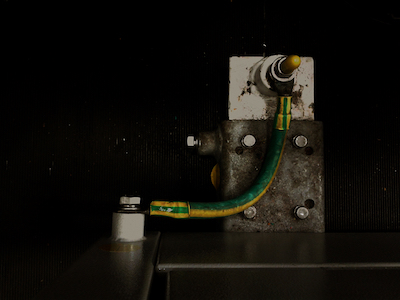How Does Electrical Grounding Work?
As a homeowner, you’ve probably heard the term “electrical grounding” before. But what does it really mean?
Grounding gives electricity the most effective way to return to the ground via your electrical panel. A grounding wire gives an appliance or electrical device a safe way to discharge excess electricity.
An electrical circuit relies on both positive and negative electricity. This connection is what gives an appliance or electronic device the power it needs to operate. If something goes wrong, there will be a buildup of energy. This can cause the electrical connection and housing to store that excess power.
When an electrical malfunction occurs, this power will be stored in internal wiring and external metal housing. A static electric shock is a simple example. You’ll only notice this buildup when a connection is made to let lost the electricity being stored.
A circuit breaker will shut off when a short circuit occurs. However, without a grounding wire, the electricity will still be present.
A grounding wire takes the electricity that has built up during the malfunction and sends it outside of your home back into the ground. The grounding wire is typically connected to either a metal internal structure within the appliance, or on the external housing. When the malfunction happens, rather than having the energy build up in the circuit, it flows back to the ground and turns off the circuit.
This grounding wire is a connection where electricity can safely be discharged without posing a threat to your appliances or electronics, or put you at risk with electrical shock.
A grounding wire is a part of most electrical outlets, lights, appliances, and electronics. In most cases, the grounding wire is the third prong that is circular and at the bottom of a power plug. The electrical grounding wire will have to connect to the soil outside of your home in some manner. Depending on your city or county zoning codes, this can occur in one of two ways.
Grounding Rod – typically an 8-foot long copper rod that is driven into the soil outside of your home. It’s placed far enough away from your home not to run into gravel, concrete, or other building materials used for your foundation, drainage, or piping system.
Copper Water Pipe – a grounding wire can be sent to the plumbing connection that feeds your hot water heater with cold water. This copper pipe goes into the ground and can offer grounding connection.
Have questions about the grounding of your home? We can help.





